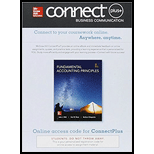
Requirement 1.
Introduction:
Product costs are the cost of Direct Material, Direct Labour and Manufacturing

Period costs are usually associated with the selling function of the business or its general administration. Period costs are reported in the accounting period in which they best match with revenues, when they expire or in the current accounting period. Interest expenses are also in the nature of period expense.
To state:
Whether the costs are either Product or Period cost
Requirement 2.
Introduction:
Direct Material is the cost which can be easily traceable to a product. It is an integral part of the finished product and often referred to as Raw material.
Direct Labor can be physically and conveniently traced to a unit of finished product. This is the cost of people who make the product.
Factory Overheads include all other indirect cost required to make a product. Usually, manufacturing Overheads cannot be easily traced to individual units of finished product.
To state:
Whether the product costs are Direct Material, Direct Labor or Factory Overheads
Requirement 3.
Introduction:
Selling expenses are those which are associated with selling the product. It includes the cost of sales personnel, sales commissions, marketing, advertising and distribution of product.
General and administrative expenses relate to the costs of general operations of the company. It includes cost of executive salaries and offices, human resource department, research and development of new product and cost of maintaining the company.
To state:
Whether the period costs are selling or general or administrative expenses
Want to see the full answer?
Check out a sample textbook solution
Chapter 18 Solutions
Connect 2-Semester Access Card for Fundamental Accounting Principles
- Can you solve this accounting question with accurate accounting calculations?arrow_forwardCan you solve this general accounting question with the appropriate accounting analysis techniques?arrow_forwardCan you solve this general accounting question with the appropriate accounting analysis techniques?arrow_forward

 AccountingAccountingISBN:9781337272094Author:WARREN, Carl S., Reeve, James M., Duchac, Jonathan E.Publisher:Cengage Learning,
AccountingAccountingISBN:9781337272094Author:WARREN, Carl S., Reeve, James M., Duchac, Jonathan E.Publisher:Cengage Learning, Accounting Information SystemsAccountingISBN:9781337619202Author:Hall, James A.Publisher:Cengage Learning,
Accounting Information SystemsAccountingISBN:9781337619202Author:Hall, James A.Publisher:Cengage Learning, Horngren's Cost Accounting: A Managerial Emphasis...AccountingISBN:9780134475585Author:Srikant M. Datar, Madhav V. RajanPublisher:PEARSON
Horngren's Cost Accounting: A Managerial Emphasis...AccountingISBN:9780134475585Author:Srikant M. Datar, Madhav V. RajanPublisher:PEARSON Intermediate AccountingAccountingISBN:9781259722660Author:J. David Spiceland, Mark W. Nelson, Wayne M ThomasPublisher:McGraw-Hill Education
Intermediate AccountingAccountingISBN:9781259722660Author:J. David Spiceland, Mark W. Nelson, Wayne M ThomasPublisher:McGraw-Hill Education Financial and Managerial AccountingAccountingISBN:9781259726705Author:John J Wild, Ken W. Shaw, Barbara Chiappetta Fundamental Accounting PrinciplesPublisher:McGraw-Hill Education
Financial and Managerial AccountingAccountingISBN:9781259726705Author:John J Wild, Ken W. Shaw, Barbara Chiappetta Fundamental Accounting PrinciplesPublisher:McGraw-Hill Education





